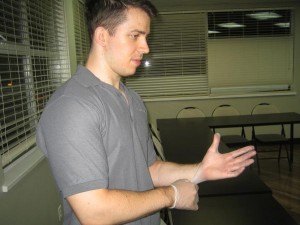Pediatric blast injuries are injuries sustained by children twelve
under twelve years of age. Typically, after a bomb or blast explosion a lot of emergency health care responders have little or no experience in handling critical pediatric patients.
Although the general principles of emergency medical procedures apply in treating most explosive blast victims, there are plenty of profound differences in treating pediatric blast injuries as with their adult counterparts. The highlights of these treatment protocols are further explained below.
Pediatric blast injuries: Brain and Other Neurological Injuries
Pediatric blast injuries involving the neurologic system can occur even without the victim losing consciousness. Accordingly, children who look awake, alert and coherent when first examined should be segregated or triaged in a different group if they exhibit any of the following signs and symptoms such as:
- Seizures
- Persistent vomiting
- Degenerating cognitive behavior such as excessive sleepiness and excitability
- Loss of consciousness
- Evidence of CSF (cerebrospinal fluid) leak
Pediatric blast injuries: Chest injuries
Pediatric blast injuries affecting the chest and thoracic region are usually caused by blunt-force impact which are among the most common cause of death in pediatric patients subjected to explosive blasts. There are several anatomical features that are very exceptional only to pediatric victims that affect their pattern of injuries. Below are some examples of unique anatomical differences between adults and children:
- Pediatric patients have shorter trachea therefore blast injuries affecting their the thoracic region would result in difficulty of intubation as well as unintentional extubation can occur.
- Pediatric patients have narrower airways and as a result, they are more prone to obstruction and bronchospasm.
- Children have much more compliant chest walls hence, rib fractures are much less common but the severity of thoracic injuries can occur even without significant visible evidence of injury.
Pediatric blast injuries: Abdominal Injuries
Pediatric patients may show several significant anatomical differences from adults with regards to the abdominal region which can severely affect the pattern of injury of pediatric patients such as:
- Pediatric patients have larger organs that are not proportionally sized according to their body which are more prone to penetrating blast injuries.
- Children have thinner abdominal walls since their abdominal muscles are underdeveloped hence offer less protection.
- Children are at higher risk of sustaining morbid abdominal injuries because of their smaller and more pliable ribs that provide little or no protection than adults.
- The liver and the spleen are the most prominent organs in the abdominal cavity which are very vulnerable from blunt or penetrating force trauma.
Initial Management for pediatric blast injuries
 Repeat physical examination and baseline assessment for pediatric patients because they are not very cooperative especially under stress.
Repeat physical examination and baseline assessment for pediatric patients because they are not very cooperative especially under stress.- Consider the possibility of cervical spine injury unless ruled out.
- The recommended initial resuscitation solution should be 20-30 cc/kg of Lactated Ringers or Normal Saline Solution
- Always provide care for pediatric patients in the presence of their parents whenever possible in order to minimize disruption and aggravation of separation anxiety.
- Provide trauma first aid for both victims and their families who have experienced traumatic events for a faster recovery from physical and emotional stress following the blast/bombing incident.
Provide the parents of pediatric patients suffering from pediatric blast injuries with mental health referral sources if applicable for further psychological evaluation and treatment.